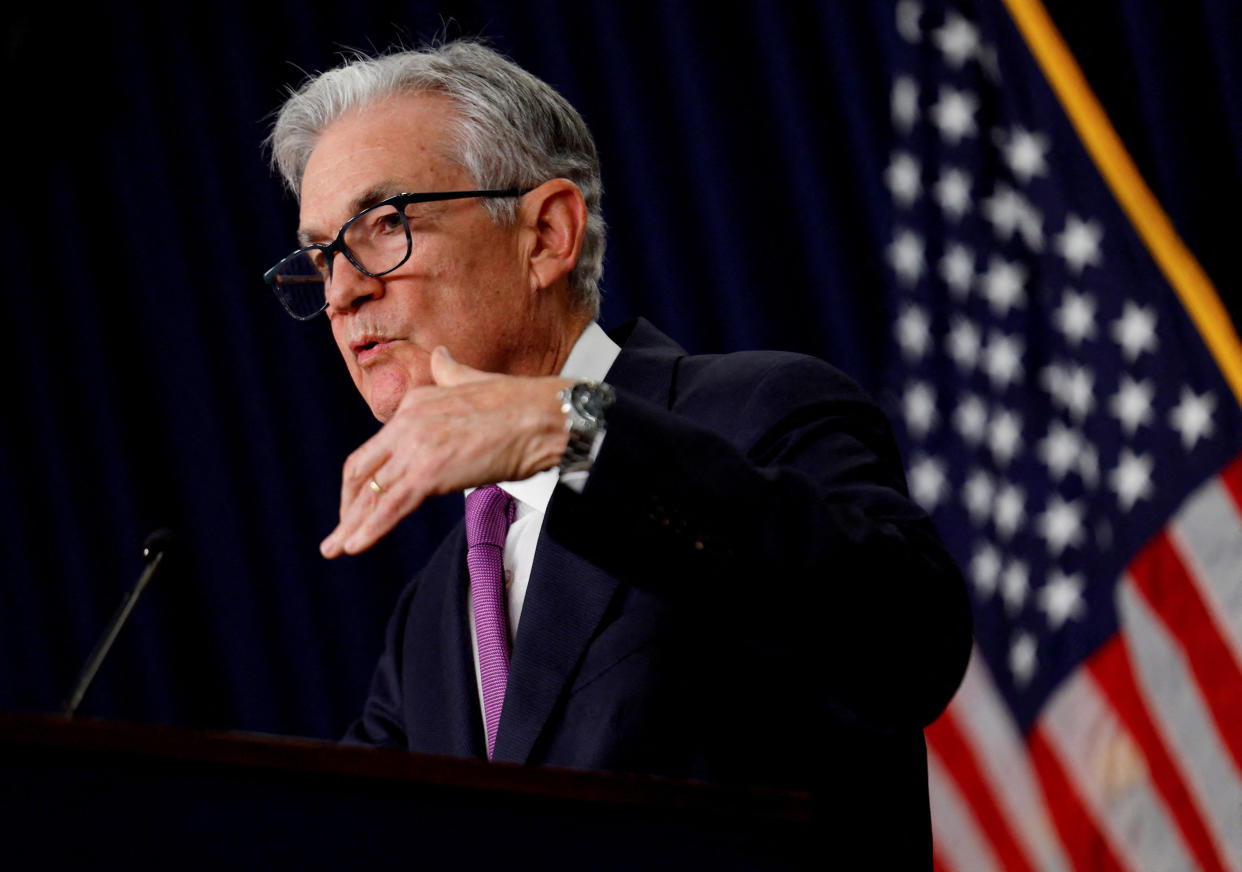Bond yields hit a 16-year high. Divergent paths for the US economy could bring them down.
Investors responding to Bank of America's latest fund managers survey released this week have never been so convinced bond yields will fall over the next 12 months.
But the reasons why yields are expected to drop from 16-year highs are built on two divergent paths for the US economy.
The firm's survey found roughly two-thirds of investors expect the US economy to experience either a "soft landing" or "no landing" scenario, in which the Federal Reserve is able to bring inflation back to its 2% target without tipping the economy into recession.
This outcome would also mean the central bank can likely hold off on further interest rate increases, which would bring down yields.
Nearly a third of respondents, in contrast, see a more troubling "hard landing" tipping the economy into recession, resulting in rate cuts bringing down yields.
In either case, this would mean we've reached — or are at least near — "peak fed funds," according to BofA investment strategist Elyas Galou, with market history also suggesting a similar thesis.
The case for a vaunted soft landing, which the Federal Reserve has made clear is its "primary objective," is currently backed by falling core inflation and a resilient labor market. Should both trends continue, pressure may stay off the Fed to raise rates again and ease the pressure on yields.
But a more dramatic break in both the economy and market in a "hard landing" outcome would likely bring buyers into the fixed-income market as investors seek safer assets in a downturn.
"There's immense pressure on the economy right now, and we're warning clients that a recession seems like more of a possibility than persistently high inflation," eToro US investment analyst Callie Cox told Yahoo Finance via email on Wednesday.
"If growth slows down, I'd expect there to be more interest in safe havens like Treasuries. Apparently, Wall Street overwhelmingly sees the same scenario playing out. Fund managers see an environment that probably won't last for long."

And a hard landing scenario could also be sparked by further interest rate hikes, which would send yields even higher in the near term. This could be keeping bond investors on the sidelines today.
The resulting recession, however, would mean interest rate cuts in 2024 and a rally in bonds.
"We expect a mild U.S. recession to occur in mid-2024, and we think this economic downturn paired with moderating inflation will push the FOMC to cut rates faster than markets currently anticipate," Wells Fargo's team of economists wrote on Oct. 13. "As a result, we look for Treasury yields to decline across-the-board in 2024."
The key to bringing investors back to the bond bidding table and ending a lingering bear market for fixed income remains further conviction on the Fed's path forward. And, overwhelmingly, investors responding to BofA's fund managers survey believe that the answer is coming sooner rather than later.
Of course, with two scenarios convincing investors yields are heading the same way, the lingering risk for markets is yields that continue to press higher. And there is currently no shortage of alternative outcomes being suggested as possible futures from experts across the investing world right now.
Ask one group of corporate executives and they may say a recession is inbound as credit tightening grabs hold of the economy. Others will point to continuously strong data and say one of the most talked about recessions in history isn't ever actually going to come.
One strategist could tell you the Fed needs to hike once more because a strong labor market is providing the consumer with too much spending power. Another will say it's imperative the Fed waits to see the lagging impacts of monetary policy to do their work.
Bets on the Fed's benchmark interest rate indicate the odds stand at 52/48 that the Fed either leaves rates unchanged or raises rates at least once more by the central bank's January meeting, according to data from the CME Group.
But until Wall Street has a firmer consensus on whether the Fed is done, don't expect the bond market to settle down.
"Volatility has been elevated," Charles Schwab strategist Kathy Jones told Yahoo Finance Live this week.
"And it probably is going to continue to be because a lot of that has to do with uncertainty about the direction of policy. This dysfunction in Washington is not helping. You've got global issues, wars now that are contributing to that."
Josh Schafer is a reporter for Yahoo Finance.
Click here for the latest stock market news and in-depth analysis, including events that move stocks
Read the latest financial and business news from Yahoo Finance
